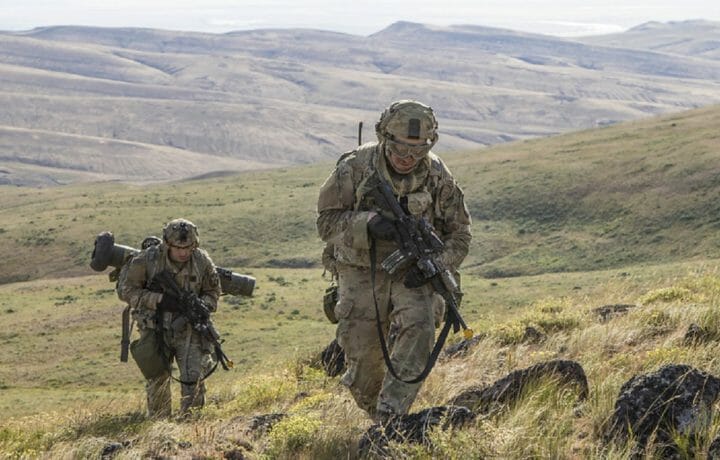Gun control advocates have lobbied for the development of so-called “smart gun” technology as a way to make guns safer. Now the U.S. Army has put the technology in its crosshairs. According to a report from Reuters, the Army has solicited bids for high-tech battlefield solutions that could put a computer system into a soldier’s firearm.
Dimensional Weapons Systems is among the companies developing a smart gun, and it is working on a technology that would allow the weapon to only be fired by a designated shooter’s hand. To accomplish this, the company has been developing a blockchain-based system that is similar to ones utilized in cryptocurrencies, including bitcoin.
What sets the efforts from Atlanta-based Dimensional Weapons Systems apart is that it doesn’t see simply adding sensors to existing firearms as a solution. Melvic Smith, the company’s principal owner, told Reuters that such efforts could be accomplished by “duct-taping an iPhone” to a gun. Instead, he said his goal is to create an embedded operating system within the gun itself.
This system, dubbed “Camelot,” would run on the decentralized ledger of information, and could record every movement of the gun. It could also offer real-time diagnostics that could tell a soldier if the weapon needs to be cleaned, repaired or even retired from service.
Next Generation Squad Weapon
Dimensional Weapons Systems is far from the only company competing to gain the Army’s attention. The military is already working with three finalists for the contract for its “Next Generation Squad Weapon.” This includes defense industry contractor General Dynamics, firearms manufacturer Sig Sauer and industrial engineering firm Textron.
The Army’s specifications for this next-gen firearm are that it would be equipped with a “smart rail” system that could provide communications and power interface between the actual weapon and a computerized onboard system. This could include a fire-control (FC) system that would link an individual soldier’s firearm to other systems. This could help warfighters of tomorrow lock on to targets – but more importantly, aid in aiming by adjusting for atmospheric conditions, windage and even range.
Such systems are already used today in artillery and anti-aircraft systems, but a smart gun could enable this technology not just at the squad level but bring it to the individual soldier. It could be utilized in personal weapons from a soldier’s M4 carbine to support machine guns.
The military has called for proposals from the various contractors by November 4, and then by the end of this year will expect to have the Innovative Designs & Engineering Assessment (IDEA) prototypes to use as they decide how to move forward.
Smart Concept
Any solution developed by the military could eventually be used in commercial firearms as well – not to make them more accurate, but perhaps to satisfy those calls to make a safer gun.
“If the DoD does decide to move ahead, it could kickstart developments that have long been touted but never really seen much daylight,” said Charles King, principal analyst at Pund-IT. “Partly that’s been due to the hesitancy of gun makers that consider smart tech a third rail of sorts that once nearly put Smith & Wesson (S&W) out of business.”
Reaction from gun owners and the firearms industry was quite severe when S&W first suggested it was developing a smart gun nearly 20 years ago. Other efforts that could limit the use of firearms to a digitally registered individual have also been met by resistance by Second Amendment supporters – but the smart gun technology that the military is seeking would go way beyond just locking out an unauthorized user.
“The DoD – being a market unto itself – doesn’t have that problem, and smart tech could provide some interesting and compelling benefits for soldiers,” King told ClearanceJobs. “For example, if a weapon could only be fired by the soldier it is ‘paired’ with, it would be essentially useless if it were lost, or if the soldier was wounded, captured or killed in battle. Depending on how the technologies were implemented, it might also lessen or eliminate the need to destroy facilities that were being abandoned – as recently occurred when U.S. soldiers withdrew from bases in Syria. Similarly, smart tech could reduce or eliminate the value of stolen military weapons.”
King added that such technology could trickle down to consumers, opening a secondary market for the contractors that developed the technology. “If development efforts are successful, gun makers might finally be willing to offer smart guns for consumer use.”


